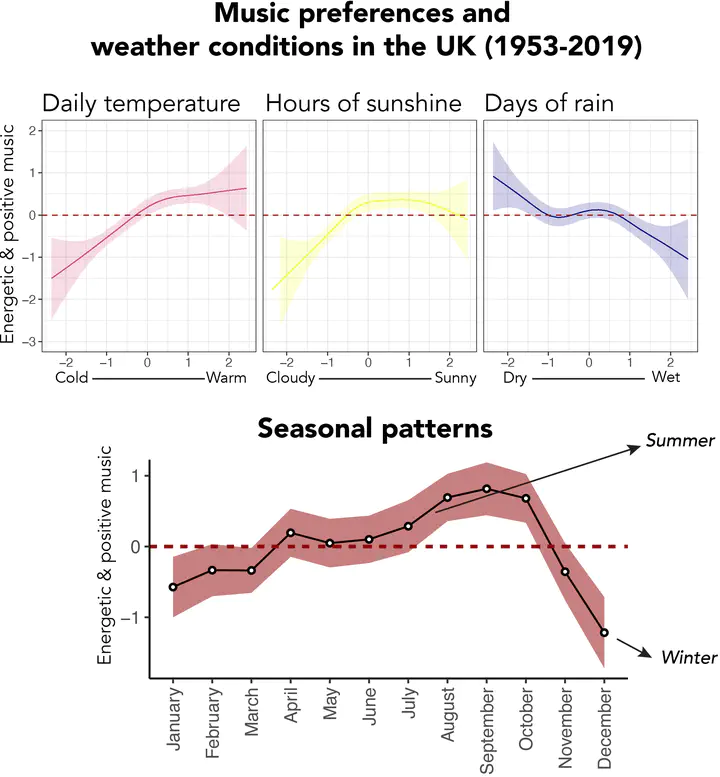Here comes the sun: music features of popular songs reflect prevailing weather conditions

Abstract
We examine associations between prevailing weather conditions and music features in all available songs that reached the United Kingdom weekly top charts throughout a 67-year period (1953–2019), comprising 23 859 unique entries. We found that music features reflecting high intensity and positive emotions were positively associated with daily temperatures and negatively associated with rainfall, whereas music features reflecting low intensity and negative emotions were not related to weather conditions. These results held true after controlling for the mediating effects of year (temporal patterns) and month (seasonal patterns). However, music–weather associations were more nuanced than previously assumed by linear models, becoming only meaningful in those months and seasons when changes in weather were the most notable. Importantly, the observed associations depended on the popularity of the music: while songs in the top 10 of the charts exhibited the strongest associations with weather, less popular songs showed no relationship. This suggests that a song’s fit with prevailing weather may be a factor pushing a song into the top of the charts. Our work extends previous research on non-musical domains (e.g. finance, crime, mental health) by showing that large-scale population-level preferences for cultural phenomena (music) are also influenced by broad environmental factors that exist over long periods of time (weather) via mood-regulation mechanisms. We discuss these results in terms of the limited nature of correlational studies and cross-cultural generalizability.
Analysis code and data supporitng this study available here.